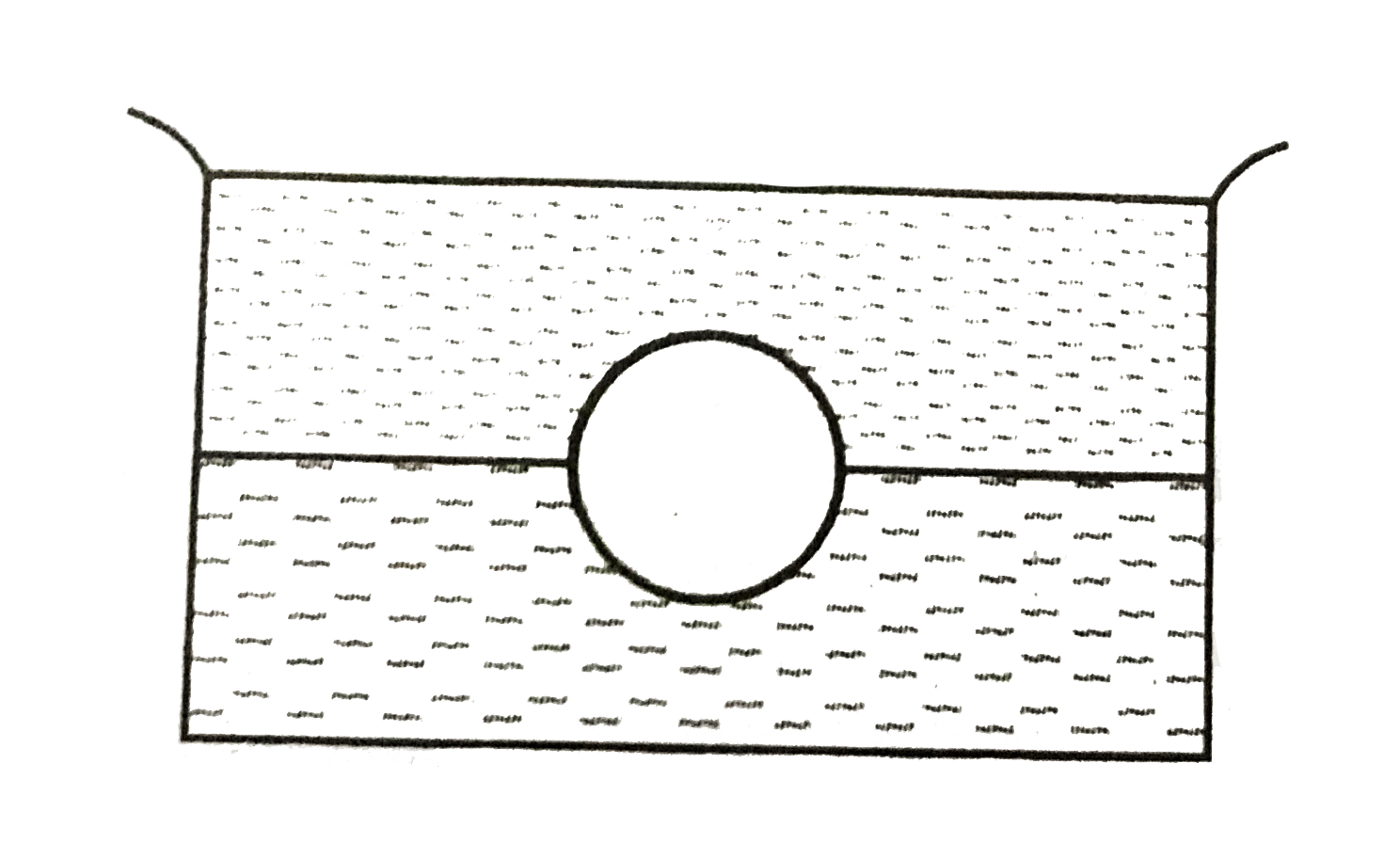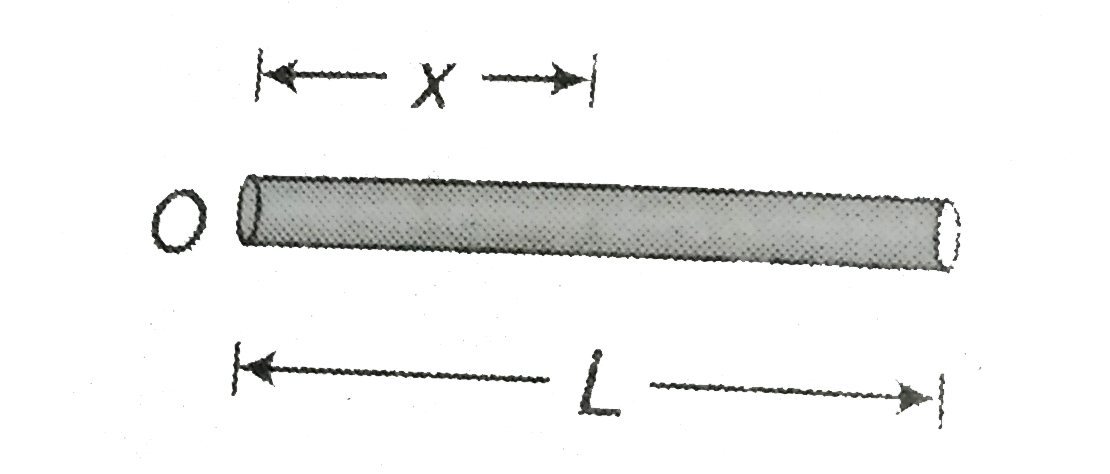Density ρ, mass m and volume V are related as ρ=m/V. Prove that
γ=−1ρdρdT.
To prove that γ=−1ρdρdT, we start with the relationship between density (ρ), mass (m), and volume (V):
1. Start with the definition of density:
ρ=mV
Here, m is the mass, and V is the volume.
2. Differentiate both sides with respect to temperature T:
Since mass m is constant (it does not change with temperature), we can differentiate ρ with respect to T:
dρdT=ddT(mV)
Using the quotient rule for differentiation, we have:
dρdT=0⋅V−mdVdTV2=−mV2dVdT
3. Substituting back for density:
We know that ρ=mV, so we can substitute m with ρV:
dρdT=−ρVV2dVdT=−ρVdVdT
4. Rearranging the equation:
Now, we can rearrange the equation to isolate dρdT:
dρdT=−ρVdVdT
5. Defining the volume coefficient of expansion γ:
The volume coefficient of expansion γ is defined as:
γ=1VdVdT
Therefore, we can substitute γ into our equation:
dρdT=−ργ
6. Final rearrangement:
Rearranging gives us:
γ=−1ρdρdT
Thus, we have proved that:
γ=−1ρdρdT
ρ=mV
Here, m is the mass, and V is the volume.
Since mass m is constant (it does not change with temperature), we can differentiate ρ with respect to T:
dρdT=ddT(mV)
Using the quotient rule for differentiation, we have:
dρdT=0⋅V−mdVdTV2=−mV2dVdT
We know that ρ=mV, so we can substitute m with ρV:
dρdT=−ρVV2dVdT=−ρVdVdT
Now, we can rearrange the equation to isolate dρdT:
dρdT=−ρVdVdT
The volume coefficient of expansion γ is defined as:
γ=1VdVdT
Therefore, we can substitute γ into our equation:
dρdT=−ργ
Rearranging gives us:
γ=−1ρdρdT
γ=−1ρdρdT
Topper's Solved these Questions
- BOOK - SL ARORACHAPTER - HEATEXERCISE - TYPE B2videos
HEAT
- BOOK - SL ARORACHAPTER - HEATEXERCISE - TYPE C2videos
HEAT
- BOOK - SL ARORACHAPTER - HEATEXERCISE - Problem For Self Practice72videos
HEAT
- BOOK - SL ARORACHAPTER - GRAVITATIONEXERCISE - m1videos
GRAVITATION
- BOOK - SL ARORACHAPTER - IIT SUPPLEMENTEXERCISE - example14videos
IIT SUPPLEMENT
Similar Questions
A body of density ρfloats with a volume V1 of its total volume V immersed in one liquid of density ρ1 and with the remainder of volume V2 immersed in another liquid of density ρ2, where ρ1>ρ2. Find the relative volumes immersed in two liquids.
View SolutionA body of density ρ is released gently on the surface of a layer of liquid of depth d and density ρ'(ρ'<ρ) . Show that it will reach the bottom of the liquid after a time.
[2dρg(ρ−ρ')]1/2 .View Solution
Knowledge Check
- Question 1 - Select One
Two substances of densities ρ1 and ρ2 are mixed in equal volume and the relative density of mixture is 4. When they are mixed in equal masses, the relative density of the mixture is 3. the values of ρ1 and ρ2 are:
Aρ1=6andρ2=2Bρ1=3andρ2=5Cρ1=12 and ρ2=4Dnone of these - Question 2 - Select One
A solid uniform ball having volume V and density ρ floats at the interface of two unmixible liquids as shown in Fig. 7(CF).7. The densities of the upper and lower liquids are ρ1 and ρ2 respectively, such that ρ1<ρ<ρ2. What fractio9n of the volume of the ball will be in the lower liquid.
 Aρ−ρ2ρ1−ρ2Bρ1ρ1−ρ2Cρ1−ρρ1−ρ2Dρ1−ρ2ρ2
Aρ−ρ2ρ1−ρ2Bρ1ρ1−ρ2Cρ1−ρρ1−ρ2Dρ1−ρ2ρ2 - Question 3 - Select One
Two circular discs A and B have equal masses and uniform thickness but have densities ρ1 and ρ2 such that ρ1>ρ2 . Their moments of inertia is
AI1>I2BI1>>I2CI1<I2DI1=I2
A block of density ρ1 floats in two immiscible liquids of density 4ρ and 2ρ , such that (14)th portion is in liquid of density 4ρ and remaining liquid of density 2ρ ,then ρ1=_________g(cm)3(Given ρ=0.8g(cm)3)
View SolutionIt has been observed that velocity of ripple waves produced in water (ρ) , and surface tension (T) . Prove that V2∝T/λρ.
View SolutionThe linear mass density i.e. mass per unit length of a rod of length L is given by ρ=ρ0(1+xL), where ρ0 is constant , x distance from the left end. Find the total mass of rod and locate c.m. from the left end.
 View Solution
View SolutionA body of density ρ floats with volume V1 of its total volume V immersed in a liquid of density ρ1 and with the remainder of volume V2 immersed in another liquid of density ρ2 where ρ1>ρ2. Find the volume immersed in two liquids. (V1 and V2).
View SolutionTwo spherical planets P and Q have the same uniform density ρ, masses MpandMQ and surface areas A and 4A respectively. A spherical planet R also has uniform density ρ and its mass is (MP+MQ). The escape velocities from the plantes P,Q and R are VPVQandVR respectively. Then
View Solution

